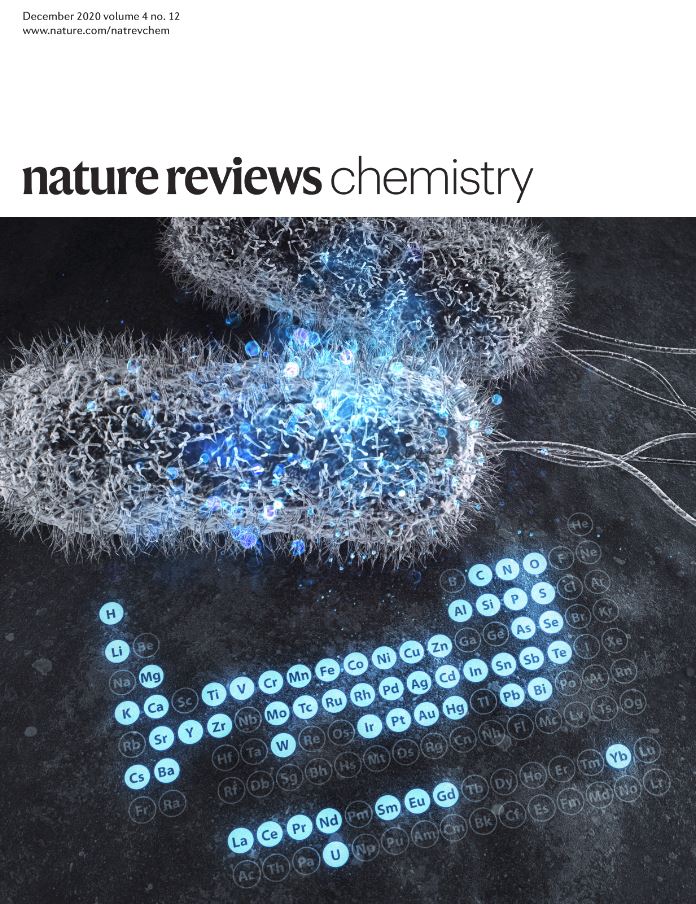- [Cover paper] Biosynthesis of inorganic nanomaterials using microbial cells and bacteriophages
- 관리자 |
- 2020-12-07 11:09:39|
- 809
- 2020-12-07 11:09:39|
Title: Biosynthesis of inorganic nanomaterials using microbial cells and bacteriophages
Author: Yoojin Choi & Sang Yup Lee
Journal: Nature Reviews Chemistry, 4:638–656 (2020.12)
Abstract: Inorganic nanomaterials are widely used in chemical, electronics, photonics, energy and medical industries. Preparing a nanomaterial (NM) typically requires physical and/or chemical methods that involve harsh and environmentally hazardous conditions. Recently, wild-type and genetically engineered microorganisms have been harnessed for the biosynthesis of inorganic NMs under mild and environmentally friendly conditions. Microorganisms such as microalgae, fungi and bacteria, as well as bacteriophages, can be used as biofactories to produce single-element and multi-element inorganic NMs. This Review describes the emerging area of inorganic NM biosynthesis, emphasizing the mechanisms of inorganic-ion reduction and detoxification, while also highlighting the proteins and peptides involved. We show how analysing a Pourbaix diagram can help us devise strategies for the predictive biosynthesis of NMs with high producibility and crystallinity and also describe how to control the size and morphology of the product. Here, we survey biosynthetic inorganic NMs of 55 elements and their applications in catalysis, energy harvesting and storage, electronics, antimicrobials and biomedical therapy. Furthermore, a step-by-step flow chart is presented to aid the design and biosynthesis of inorganic NMs employing microbial cells. Future research in this area will add to the diversity of available inorganic NMs but should also address scalability and purity.

Author: Yoojin Choi & Sang Yup Lee
Journal: Nature Reviews Chemistry, 4:638–656 (2020.12)
Abstract: Inorganic nanomaterials are widely used in chemical, electronics, photonics, energy and medical industries. Preparing a nanomaterial (NM) typically requires physical and/or chemical methods that involve harsh and environmentally hazardous conditions. Recently, wild-type and genetically engineered microorganisms have been harnessed for the biosynthesis of inorganic NMs under mild and environmentally friendly conditions. Microorganisms such as microalgae, fungi and bacteria, as well as bacteriophages, can be used as biofactories to produce single-element and multi-element inorganic NMs. This Review describes the emerging area of inorganic NM biosynthesis, emphasizing the mechanisms of inorganic-ion reduction and detoxification, while also highlighting the proteins and peptides involved. We show how analysing a Pourbaix diagram can help us devise strategies for the predictive biosynthesis of NMs with high producibility and crystallinity and also describe how to control the size and morphology of the product. Here, we survey biosynthetic inorganic NMs of 55 elements and their applications in catalysis, energy harvesting and storage, electronics, antimicrobials and biomedical therapy. Furthermore, a step-by-step flow chart is presented to aid the design and biosynthesis of inorganic NMs employing microbial cells. Future research in this area will add to the diversity of available inorganic NMs but should also address scalability and purity.
| 첨부파일 |
|
|---|

